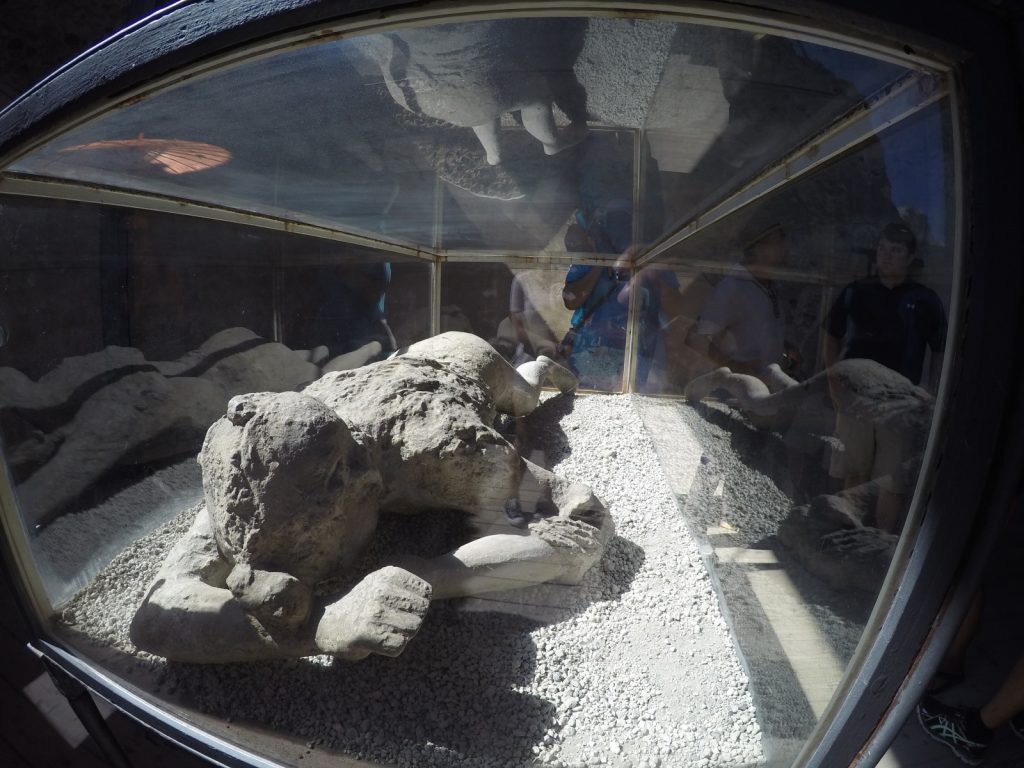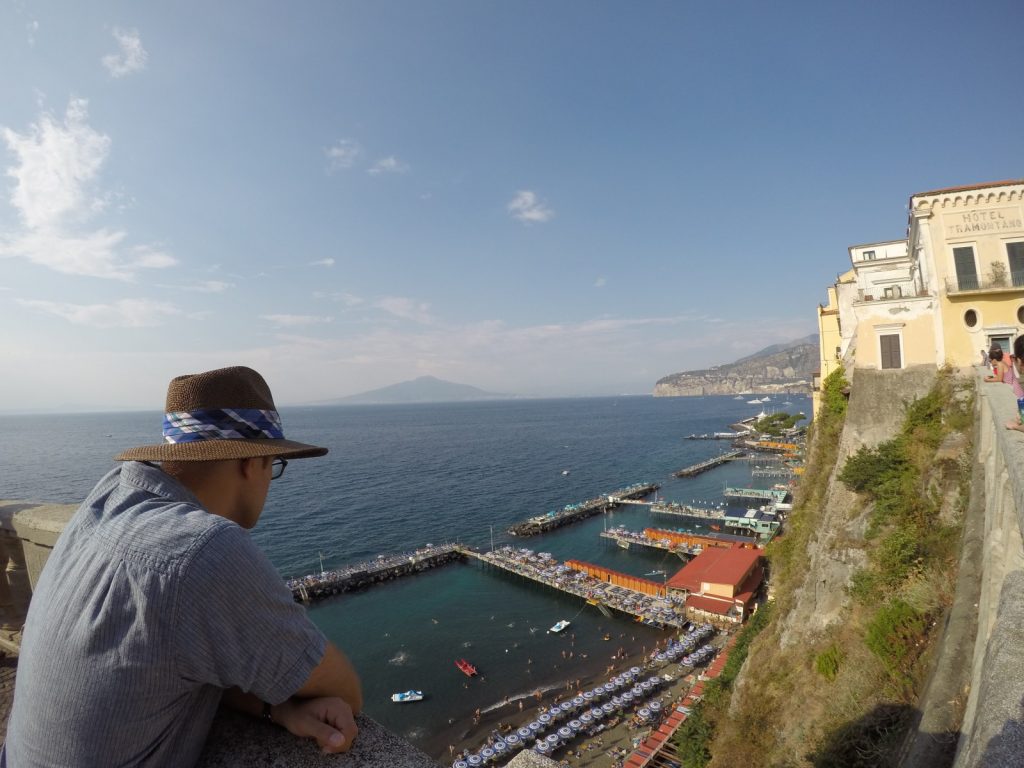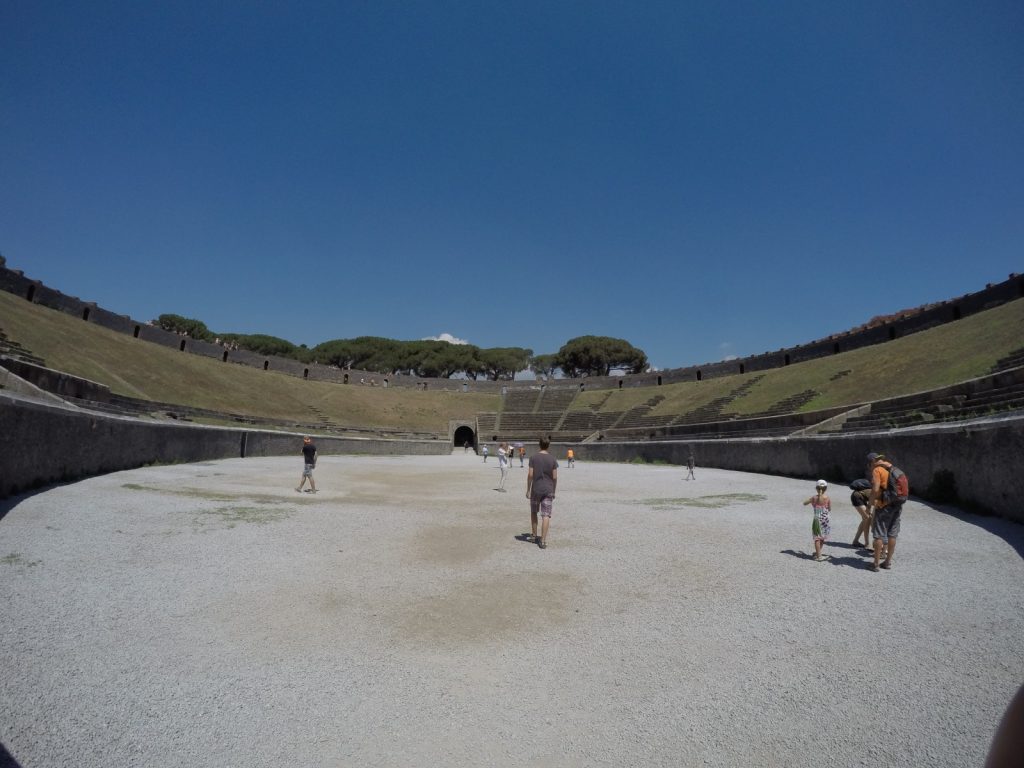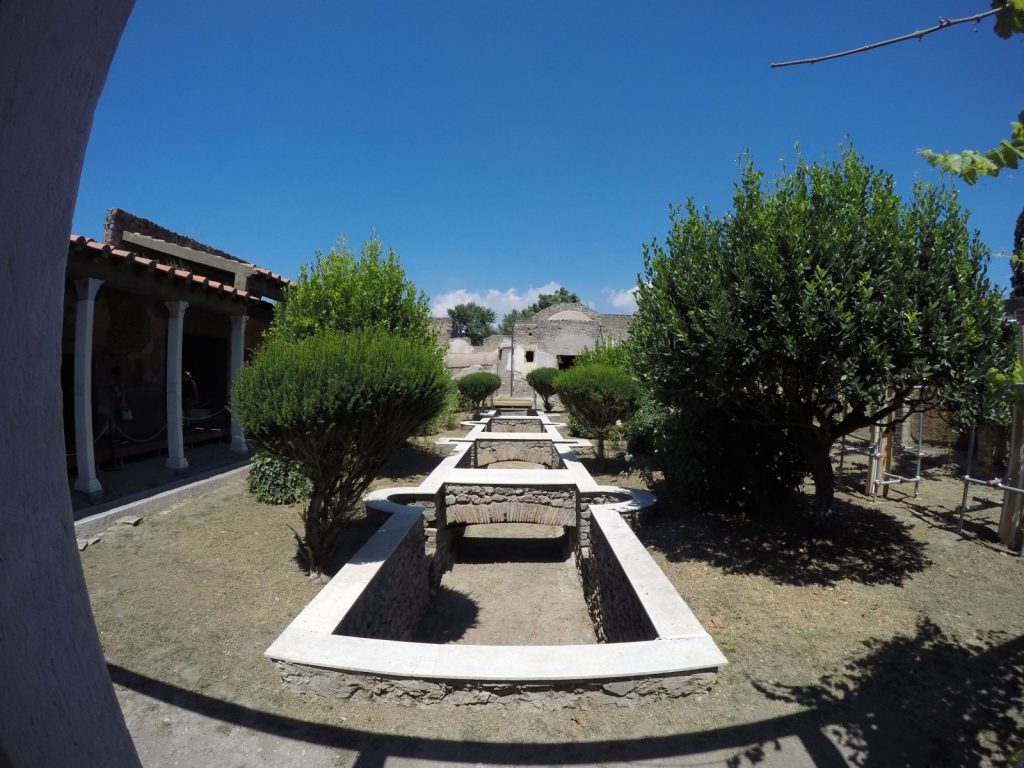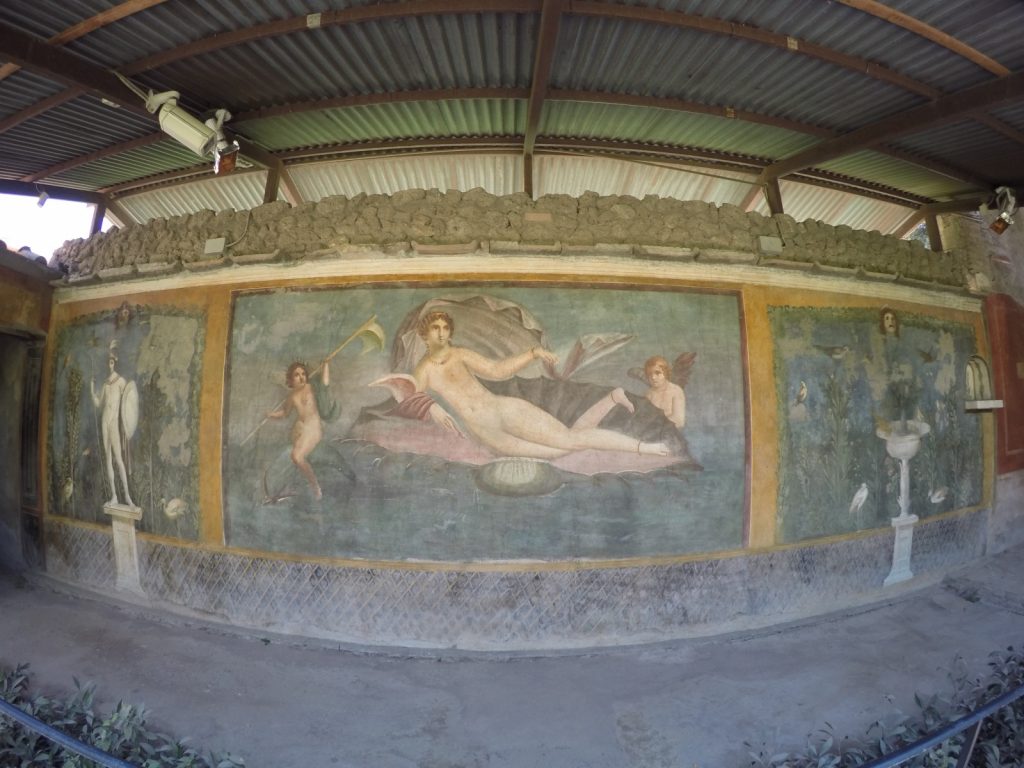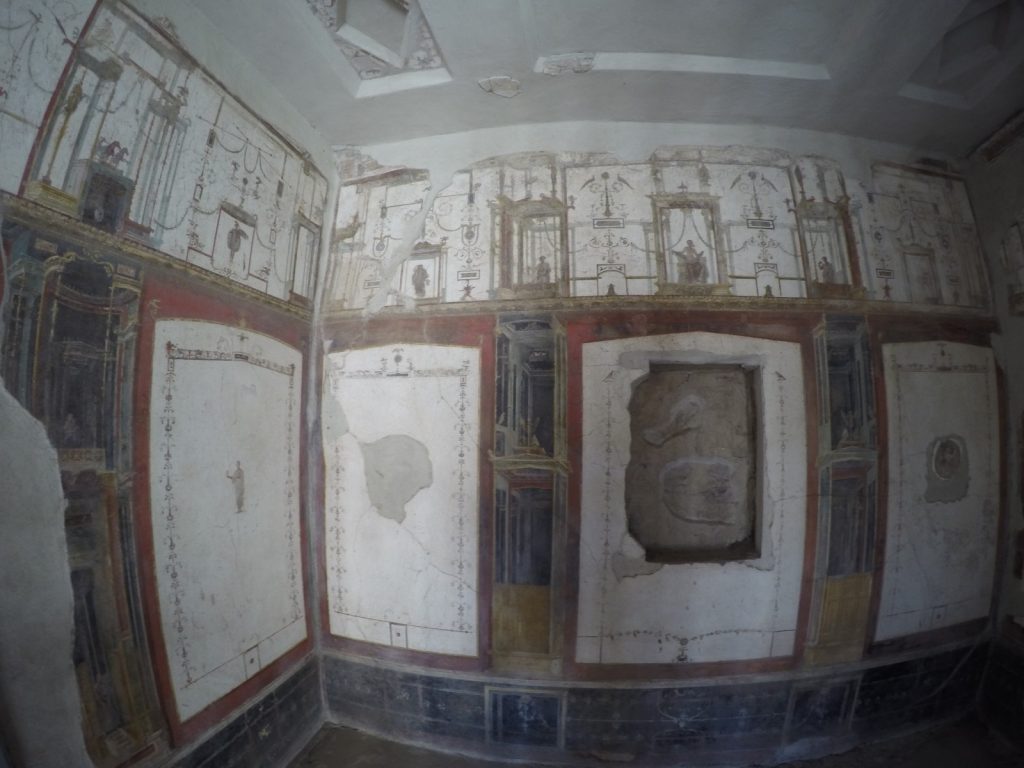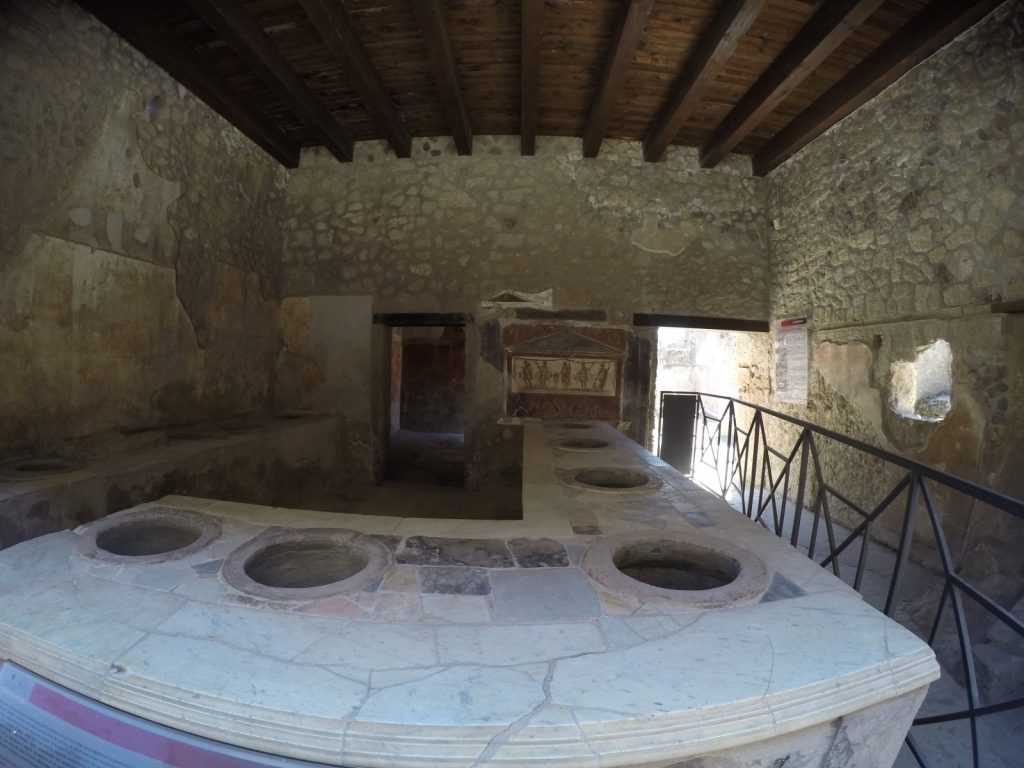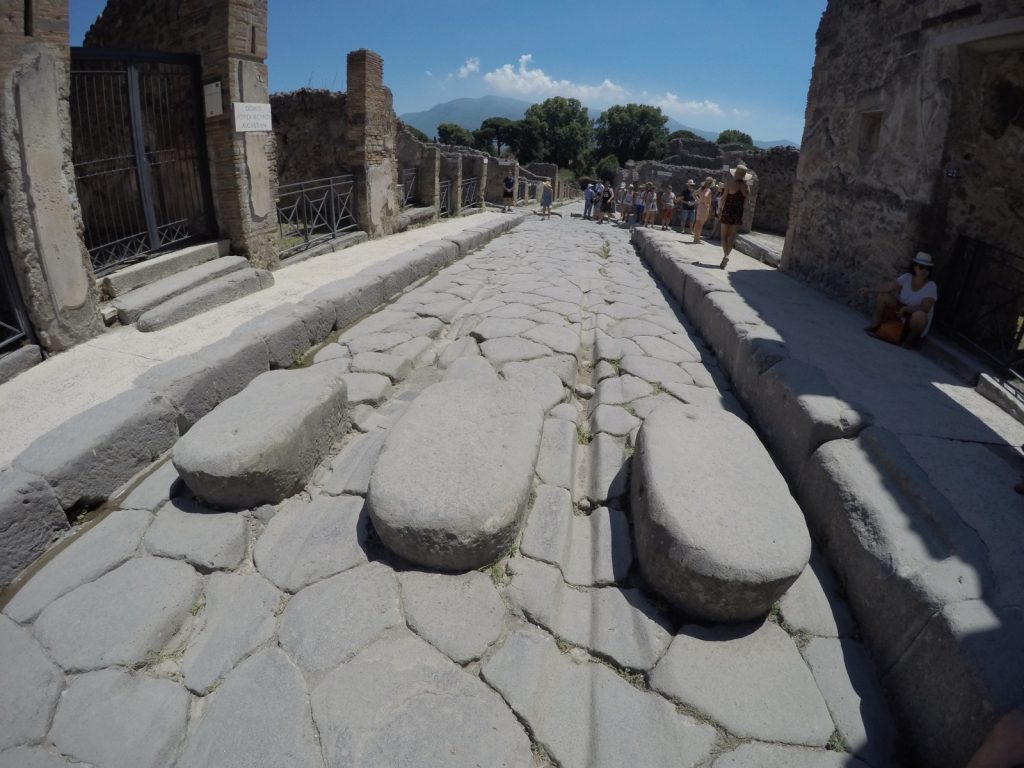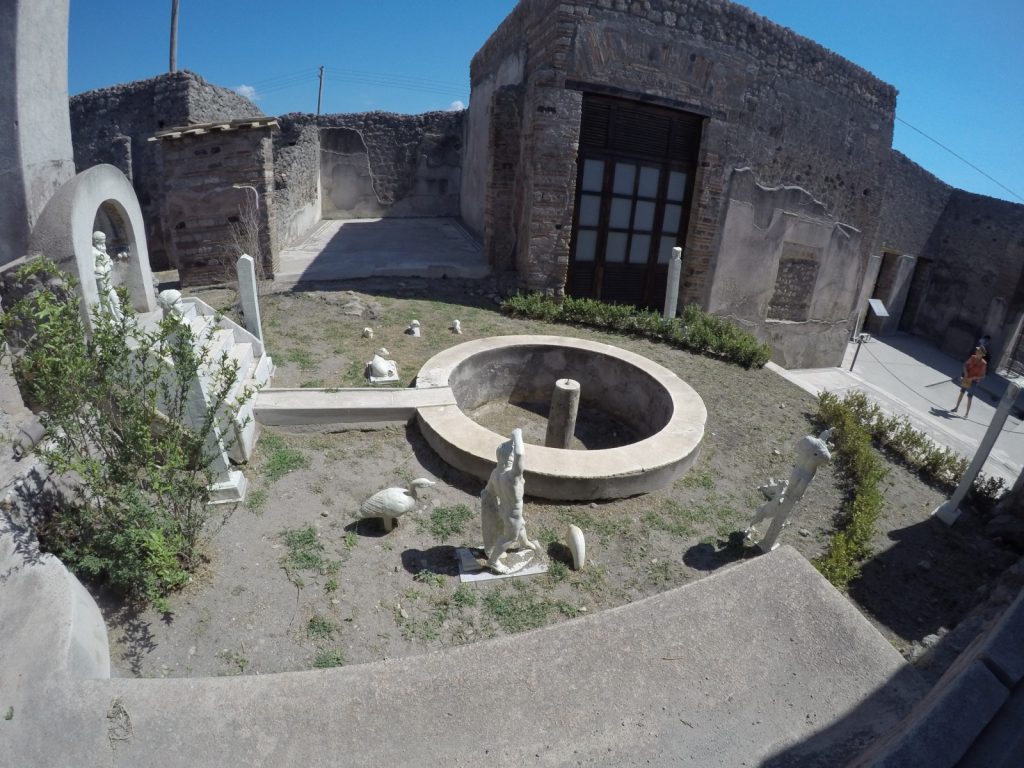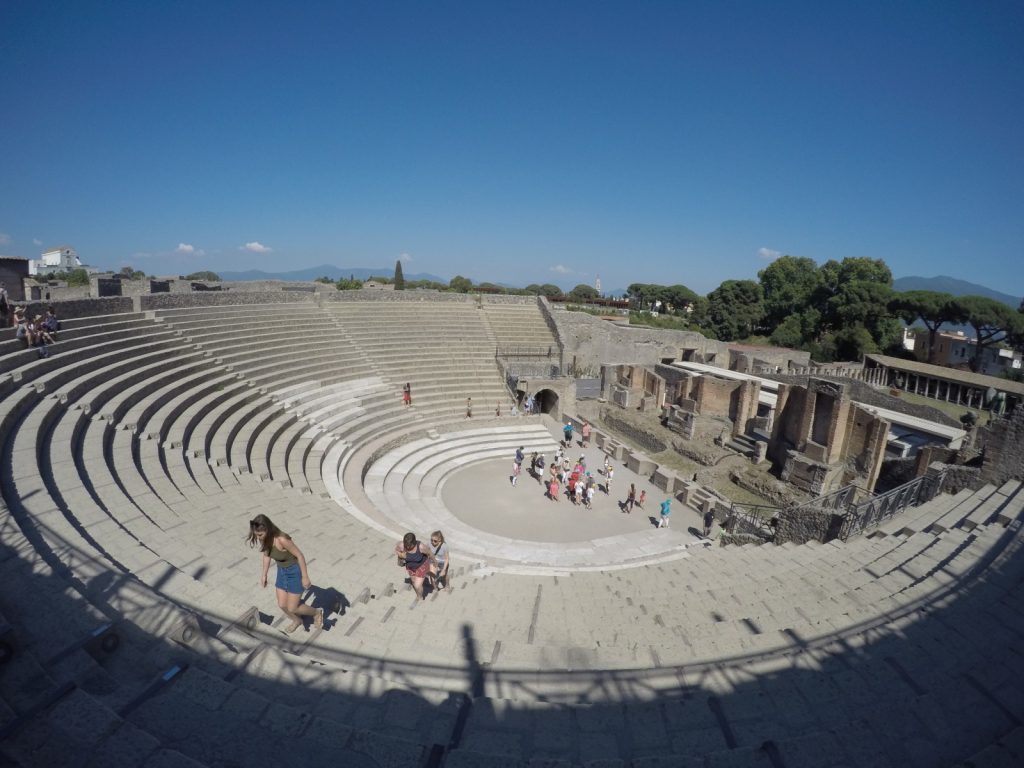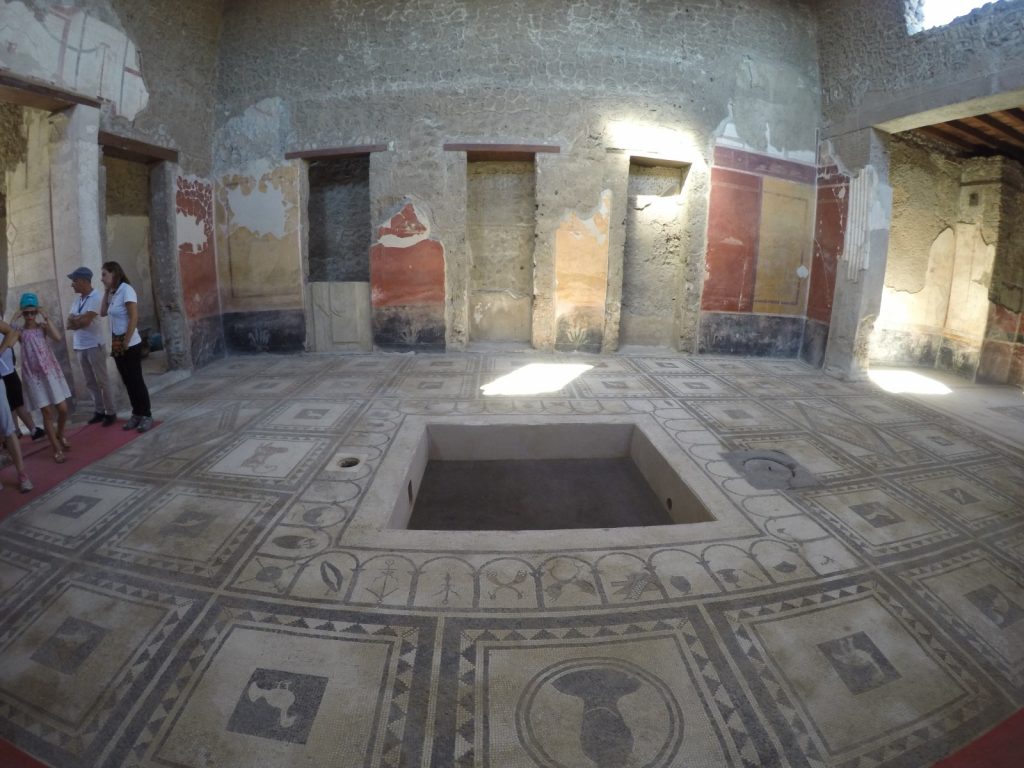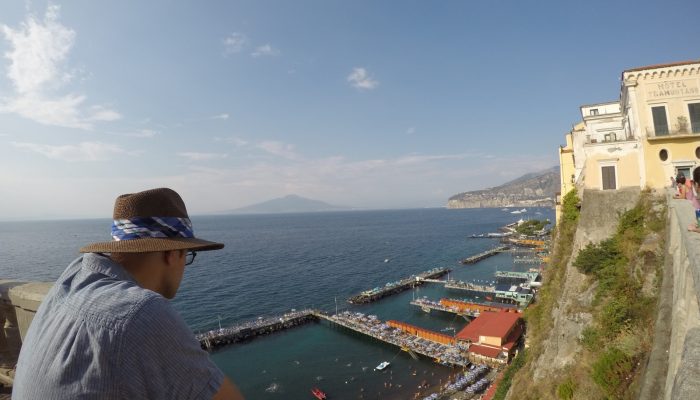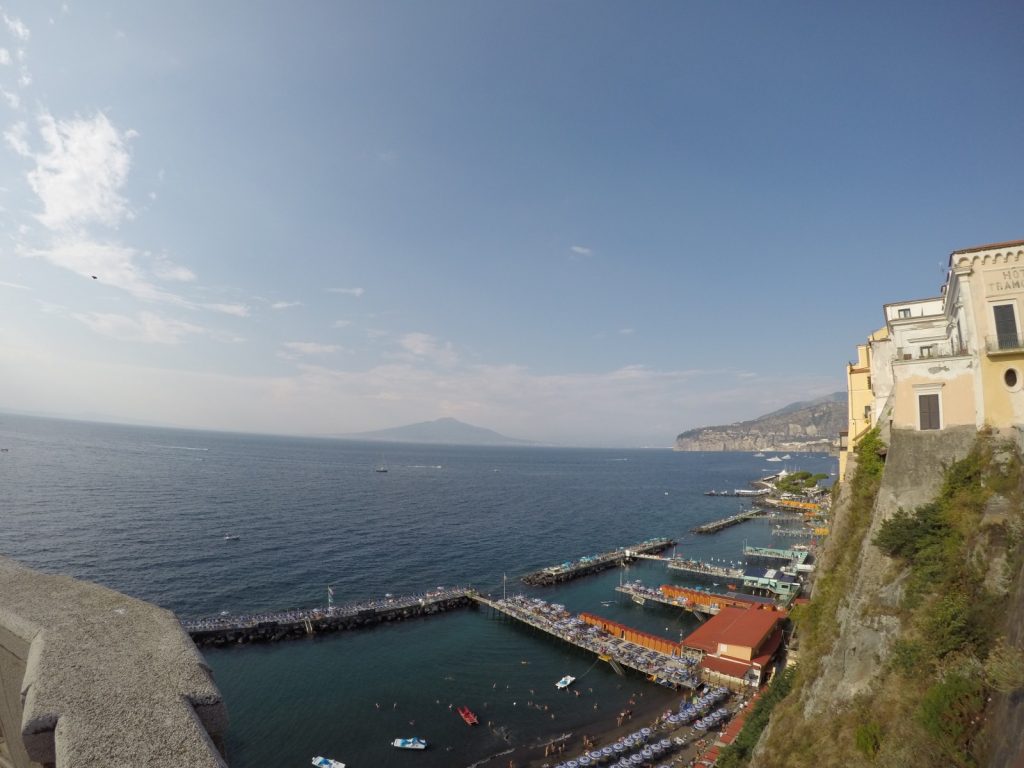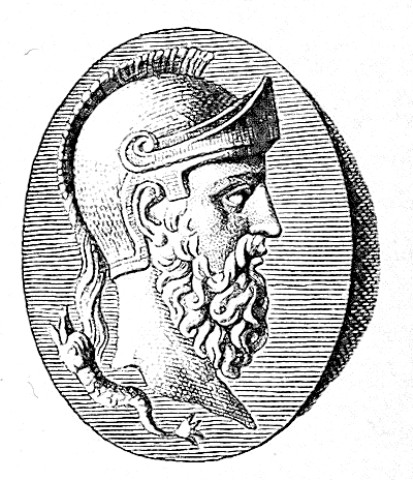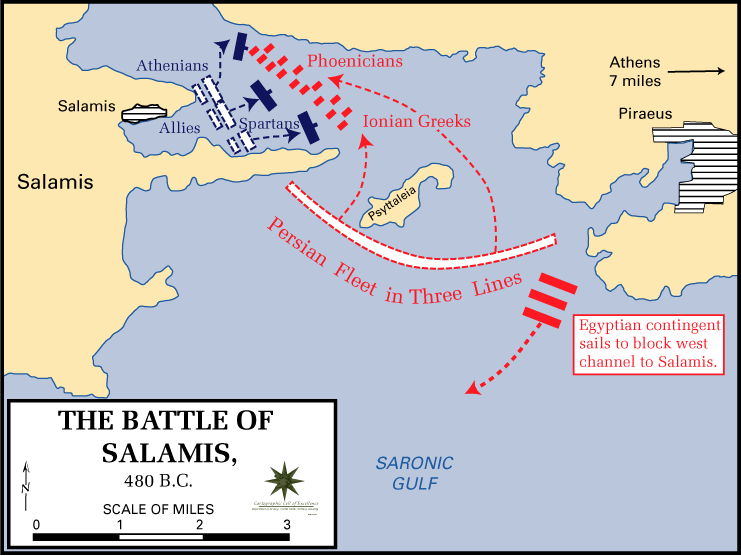This post unifies two of my absolutely favourite topics: geology and classical Greek history. I have always had a soft spot for the classics. In fact, when I started my undergrad I was planning on doing a double major of geology and classics. I decided to focus on geology, but I have not lost my love of ancient civilizations particularly the ancient Greeks and Romans.

Odysseus (Source: Wikipedia)
Most of us are familiar with the story of the Odyssey, but I’ll recap it here briefly. The Odyssey is the tale of Kind Odysseus’s journey back from Troy to his home island of Ithaca. Odysseus, despite being a pretty shrewd guy, angers the god Poseidon who condemns him to wander the ocean for decades before he can go home. During this time Odysseus experiences many wild adventures in is quest to return home to his wife, Penelope and his son, Telemachos. Eventually, Odysseus returns home, but just in time to prevent his kingdom falling into rival hands. It is a classic good guy triumphs over evil tale and one of the best classical poems ever written. Homer obviously took substantial creative licence in the poem, as was customary at the time, however many of the places he mentions are real, as are the people such as Agamemnon, Menelaus, Troy, Mycenae, Sparta, etc. However, there has always been a question…where is Ithaca?? Indeed, Ithaca was missing. The home of the principle character in the poem was nowhere to be found and this just doesn’t jive with the accurate nature of rest of the poem.
This is a question that had baffled classical scholars for decades. At first, many believed that Homer just made up Ithaca since at that time Troy was believed to be fictional as well. However, once Troy was discovered it no longer made sense to think that Ithaca was made up and therefore, it must be some place amongst the Greek islands.
The passage in the Odyssey that describes the location of Ithaca is as follows:
εἴμ’ Ὀδυσεὺς Λαερτιάδης, ὃς πᾶσι δόλοισιν
ἀνθρώποισι μέλω, καί μευ κλέος οὐρανὸν ἵκει.
ναιετάω δ’ Ἰθάκην ἐυδείελον: ἐν δ’ ὄρος αὐτῇ
Νήριτον εἰνοσίφυλλον, ἀριπρεπές: ἀμφὶ δὲ νῆσοι
πολλαὶ ναιετάουσι μάλα σχεδὸν ἀλλήλῃσι,
Δουλίχιόν τε Σάμη τε καὶ ὑλήεσσα Ζάκυνθος.
αὐτὴ δὲ χθαμαλὴ πανυπερτάτη εἰν ἁλὶ κεῖται
πρὸς ζόφον, αἱ δέ τ’ ἄνευθε πρὸς ἠῶ τ’ ἠέλιόν τε,
I am Odysseus, Laertes’ son, world-famed
For stratagems: my name has reached the heavens.
Bright Ithaca is my home: it has a mountain,
Leaf-quivering Neriton, far visible.
Around are many islands, close to each other,
Doulichion and Same and wooded Zacynthos.
Ithaca itself lies low, furthest to sea
Towards dusk; the rest, apart, face dawn and sun.
So there you have it in beautiful Homeric Greek. The location of Ithaca…it is the westernmost of the Greek islands, which today is Cephalonia, formerly known as Sake, and not Ithaca. As for the current Greek island called Ithaca it in no way meets the description of Homer’s Ithaca and therefore it cannot be the same island, unless Homer was trying to play a massive joke on us all or did not understand basic geography, neither of which is very likely. So where did ancient Ithaca go?
Over the past few years a new theory has emerged to answer this question. In short the idea is that the thin isthmus of land between Paliki and the rest of Cephalonia was at one point underwater separating the two places and resulting in two islands. Indeed, there is classical text to back up such and idea. Strabo, the renowned ancient geographer wrote “where the island is narrowest it forms an isthmus so low-lying that it is often submerged from sea to sea.” If we trust Strabo, this means that during classical times there were actually two islands that are now one. Perhaps, westernmost Paliki was Ithaca during Homer’s time and the current island called Ithaca was another island was Doulichion. However, how can we prove that this idea is more than just an interesting theory?

Elevation map of Cephalonia. The white test is the current names and the yellow text is the name in Homer’s time. (Source: Odysseus Unbound)
Well, to answer this question we must turn to geology…we had to get there sometime.
The geological investigation of Stabo’s channel, now known as the Thinia valley, is being carried out by John Underhill, a professor of seismic and sequence stratigraphy in the University of Edinburgh department of geosciences. The geological evidence that Strabo’s channel existed is outlined in a paper by Dr. Underhill published in Nature Geoscience and is freely available online. However, I’ll give a brief outline of the evidence here.
In order to prove that Paliki was once an island the geology must show that the Thinia valley was once under water. However, the problem is that the elevation of the Thinia valley is 180m above sea level…and sea level certainly has not changed 180m is only 3000 years!!! However, there are other geologic features that can account for some of the uplift. The Eastern side of the Thinia valley is divided by a large thrust fault known as the Aenos Thrust, which is an extremely active fault to this day. Indeed, the last major earthquake on Cephalonia was a 7.2 magnitude in August 1953. The seismicity is generated by the collision of the Eurasian plate with the African plate. However, the earthquakes, while they cause substantial uplift did not occur often enough or have enough displacement to result in over 180m of uplift since the time of Homer. Therefore, another mechanism is needed to fill in the valley and raise it to 180m. Mapping of the island and the valley revealed a possible solution to this problem. The mapping revealed the occurrence of several large landslides and rockfalls in the valley. In fact, large blocks from the valley walls are easily observable within the valley. These massive landslides and rockfalls were caused by the earthquakes and storms and a lot of material fell from the steep valley walls into the valley.

A resitivity survey of the Thinia valley. The blue is Cretaceous bedrock, red is water, and the green and yellow are unconsolidated sediments. (Source: Odysseus Unbound)
To further prove the existence of Strabo’s channel, however, direct evidence of marine sediments must be observed underneath all of the landslide fill. In order to do this Underhill’s team drilled numerous boreholes around the valley and found many places where there was indeed marine sediment. In addition to drilling they also conducted geophysical surveys in order to map the subsurface geology of the valley in greater detail, which would allow them to map the channel and prove that it actually separated Paliki from the rest of Cephalonia. The geophysical techniques allowed them to determine the amount of fill in the valley from landslides, the depth to bedrock and the bedrock contours. Further surveys also revealed that there were drainage features in the sediment of the embayments on either side of the valley which shows that water flowed into the sea through the valley. Combining the boreholes, and the geophysical mapping all of the evidence points to the fact that Strabo’s channel did exist 2000-3000 years ago and that since that time uplift from earthquakes, landslides and rockfalls has filled in the channel and joined Paliki (Ithaca) to the rest of the Cephalonia concealing Ithaca from us!!!
Thanks for reading and please feel free to post any questions or comments!
References:
Odysseus Unbound: http://www.odysseus-unbound.org/
Underhill, J. (2009). Relocating Odysseus’ homeland Nature Geoscience, 2 (7), 455-458 DOI: 10.1038/ngeo562
Note: This is a repost from my pre-EGU blog location with minor updates. It was originally posted in June 2012.
